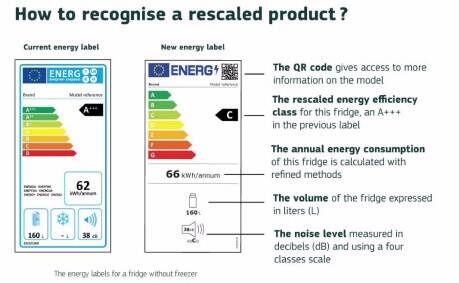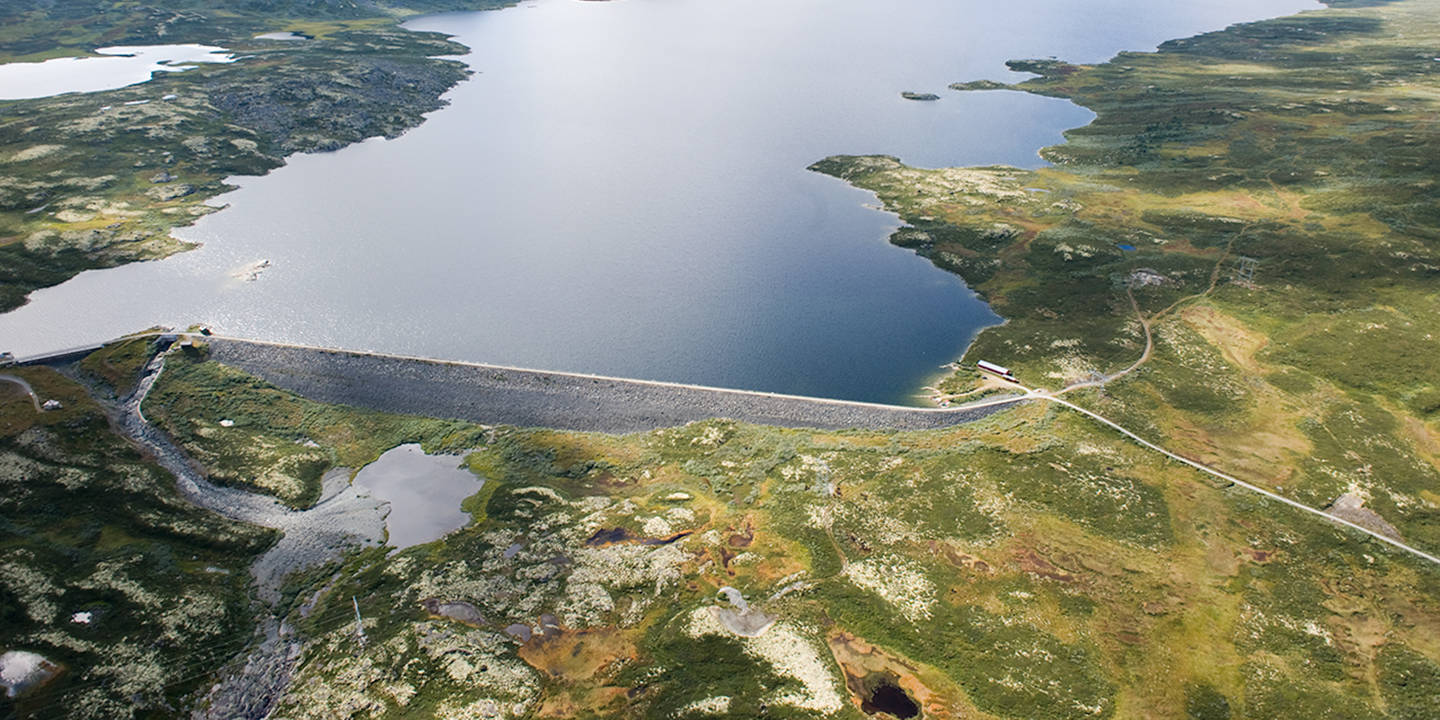The purpose of energy labeling is to provide consumers with easily recognizable and comparable information, which provides a basis for choosing the most energy-efficient products. The products are graded according to how energy efficient they are, based on a scale, where A is the best and G gives the worst grade. Energy labeling regulation imposes information requirements on manufacturers and suppliers, while retailers (shops) are required to place the energy labeling clearly visible.
In 2017, the EU decided to update the energy label. The purpose of the change is to make it as easy as possible to understand the energy label arrangement. This includes, among other things, a new grading scale that goes from A to G without further division. This means that the grades A+ to A+++ will disappear gradually.
Comparison of new and old energy label
Rescaling of labels started in 2021 for the following selection of product groups: Fridges and freezers, Dishwashers, Washing machines and washer-dryers, Electronic displays including televisions & Lighting

The Ecodesign Directive sets requirements for improving the energy efficiency and environmental performance of energy-related products for placing/or putting into service on the EU internal market. The directive is aimed at manufacturers/importers and covers the household sector, the service sector and the industry. If products meet specified ecodesign requirements, they qualify for CE marking, and may be sold throughout the internal market. Ecodesign requirements are intended to remove the least energy-efficient products from the market and reduce the environmental impact of energy-related products at all stages of their life cycle.
The EU is drawing up product-specific rules under the Ecodesign Directive on an ongoing basis, in the same way as for products covered by the Energy Labelling Directive. The EU has signaled that ecodesign will be a tool to achieve circular economy. Future requirements could be related to a products use of resources, how easy the product is to repair or recycle. Several products covered by eco-design requirements are also covered by energy label requirements.
Guarantees of origin are certificates to show an end customer that an amount of electricity is produced from a specific source. Guarantees of origin were first introduced in the 2001 Renewable Energy Directive (2001/77/EC), which entitled all producers of renewable electricity to obtain guarantees of origin. These provisions were retained in the 2009 directive (2009/28/EC), and extended to heating and cooling produced from renewable sources.
Guarantees of origin are tradable, and a facility that is approved for issuing guarantees of origin is certified for five years, after which it must be reapproved. Several European countries, including Norway through Statnett, are members of the AIB (Association of Issuing Bodies), which ensures that records of the purchase and sale of guarantees of origin are maintained and facilitates cross-border trading of these certificates. In Norway, Statnett manages the registry, while the Norwegian Water Resources and Energy Directorate (NVE) supervises the guarantee of origin scheme. Guarantees of origin do not constitute a financial support mechanism that directly triggers the development of new production, but they can be used for marketing purposes.
Based on the EU Electricity Market Directive, Norwegian electricity suppliers are required to inform their customers about the origin of the electricity delivered in the previous year through disclosure statements. This information must be provided in promotional materials and on invoices. Each year, NVE calculates a climate declaration based on the physical delivery of electricity, and a disclosure statement based on the sale of guarantees of origin

